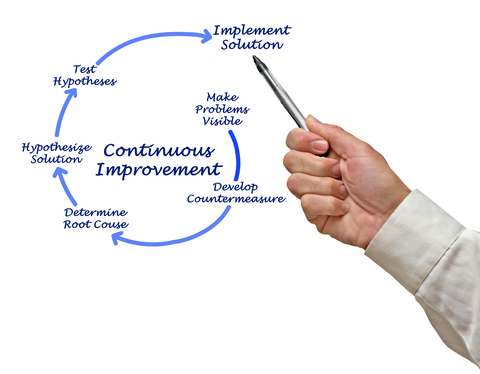
There are a series of benefits associated with standardized work using lean. When used properly, it can be a very effective tool in your arsenal. However, knowing the reasons as to why it should be implemented will also prove to be essential if we wish to get the best out of your approach. In order to help, we can spend some time examining three different benefits associated with it that may very well assist us in understanding why we may wish to use this tool.
1. It Provides a Sense of Consistency
If something is consistent, then it leads to greater efficiency, as well as reducing the levels of confusion that may surround a particular process. Without standardized work, there is virtually no chance of achieving the required levels of consistency. This can become a frustrating cycle of guesswork that can easily be avoided.
If there are no clear instructions of what to do or the order in which things should be done, then it leads to far too many questions being asked with no answers provided. Planning goals and targets without standardized work will result in additional errors and costly mistakes being made unnecessarily.
Think of it from this perspective: If a production line does not have a standardized approach, it would lead to disorganized production, unpredictable outcomes, lack of communication and products being finished at the wrong times in no clear order. With departments waiting for others to complete their part as people attempt their own approach, this will result in potential chaos and the end result would be erratic and the quality of the production line would vary.
2. It Becomes Easier to Identify Problems
When approaches and processes are standardized, it then becomes substantially easier to spot a problem and to then identify it at the earliest opportunity. However, if you fail to use a standardized approach, then time will be wasted. Professional approaches must determine if there is a problem, how to overcome it and ensure past problems are nullified.
When there is no clear path to success, there is too much room for guesswork and a wide margin for error. When there is this standardized approach, it then means you are instantly aware of when something goes wrong, how to tackle it and you also have a procedure that everybody involved can follow and refer back to if they have any doubts about the process. If a plan deviates from a standardized approach, then specific mishaps can be predicted and pinpointed. Productivity is all about reducing waste and improving efficiency.
3. The Ability to Sustain Improvements
Standardized work also makes it easier to sustain improvements, as everybody involved in the process is working from the same initial point. Also, when people are aware of the key steps to follow, and the order in which each step should happen, it means we can avoid unnecessary stress.
Conclusion
There are actually numerous benefits associated with using a standardized work approach for any company, regardless of how many staff, what industry, etc. A standardized work plan leads to a smoother path for the company across each and every department. Some people mistakenly believe that using the standardized approach eliminates freedom of expression, but that is simply not true as this is not intended to be a completely confined approach but rather a framework for people to operate within while they have the freedom to make improvements that will then have a profound impact.
Standardized work will undoubtedly be of benefit, so failing to adopt this approach will only lead to unnecessary complications.









No responses / comments so far.